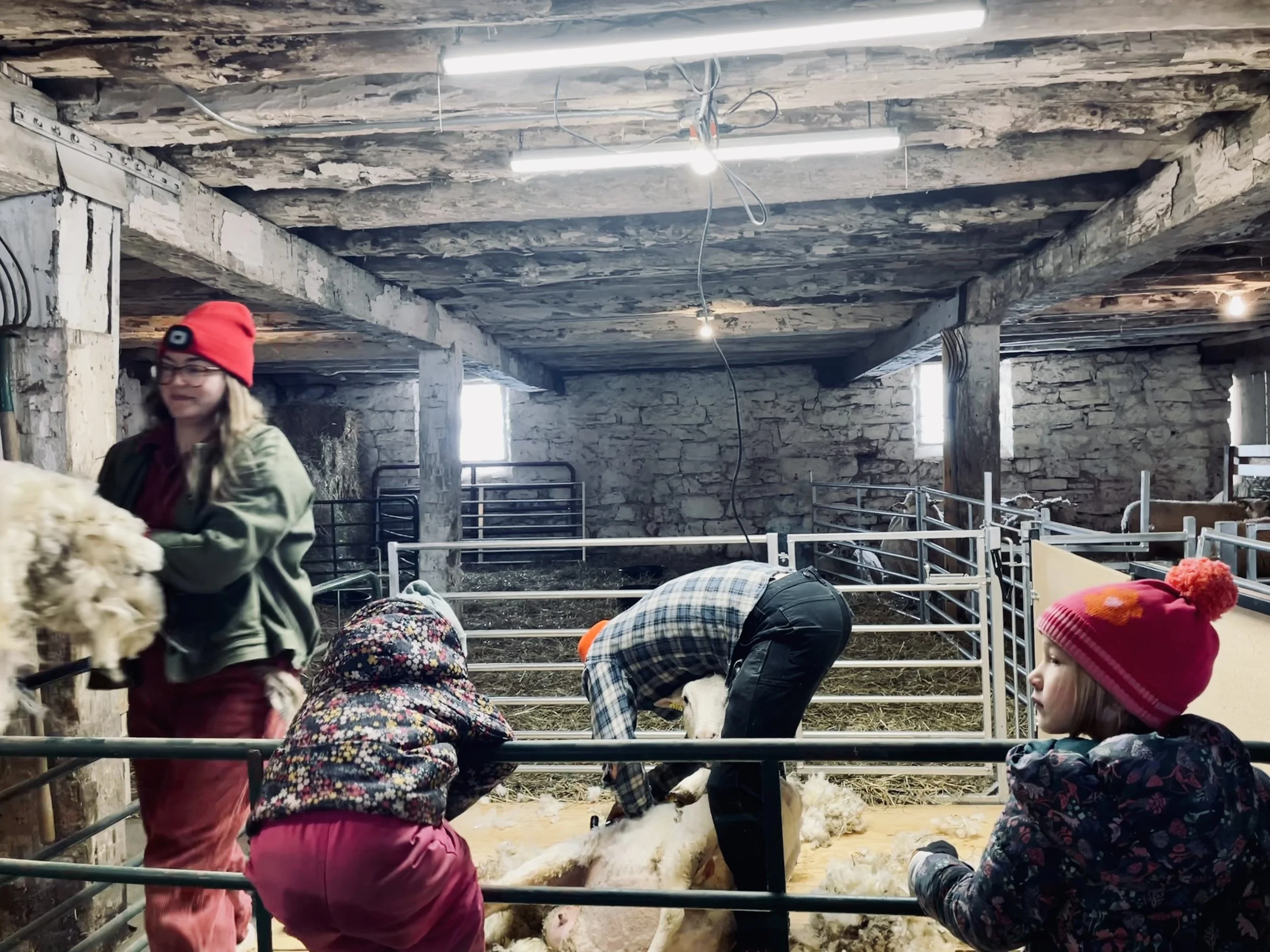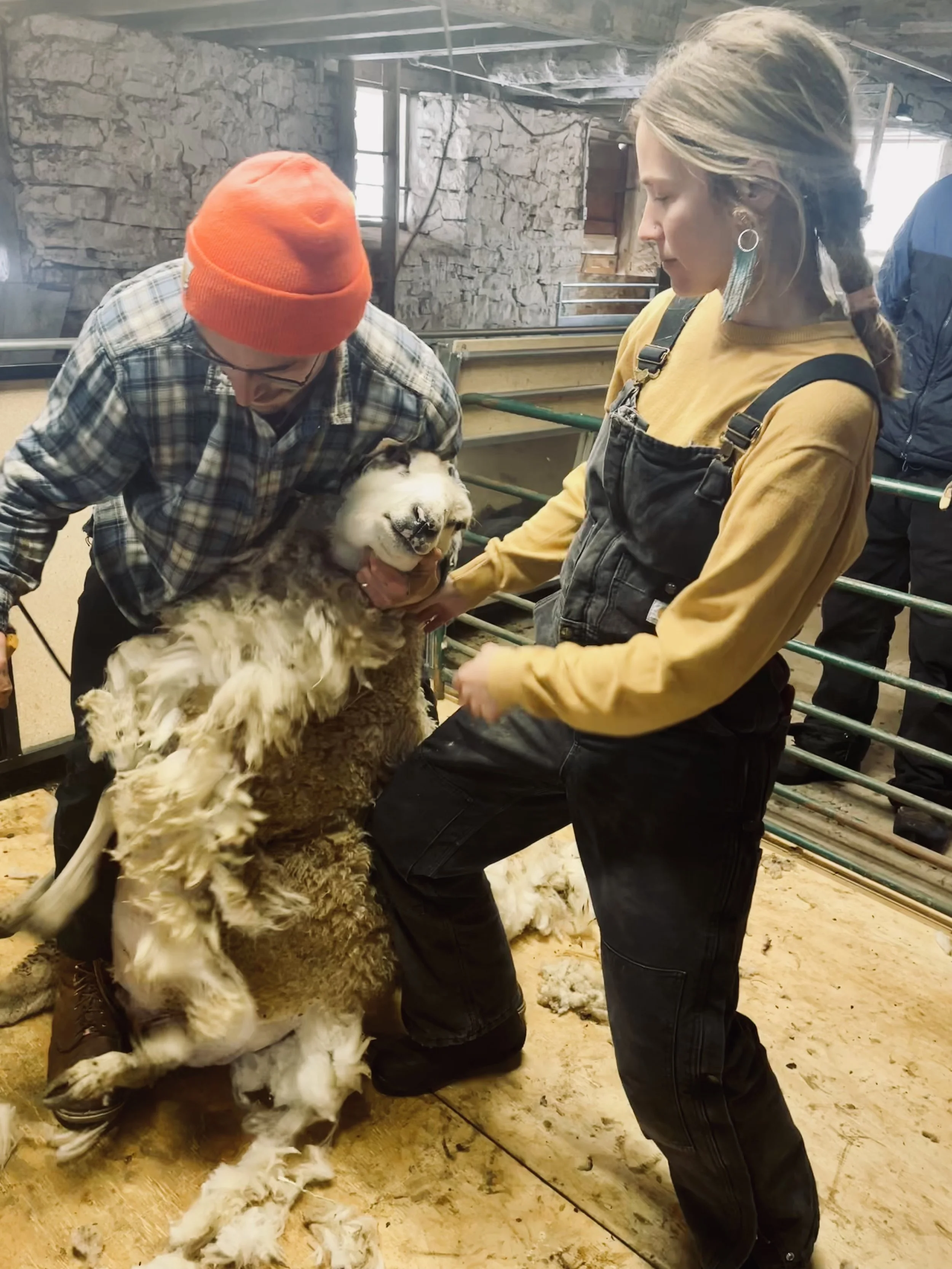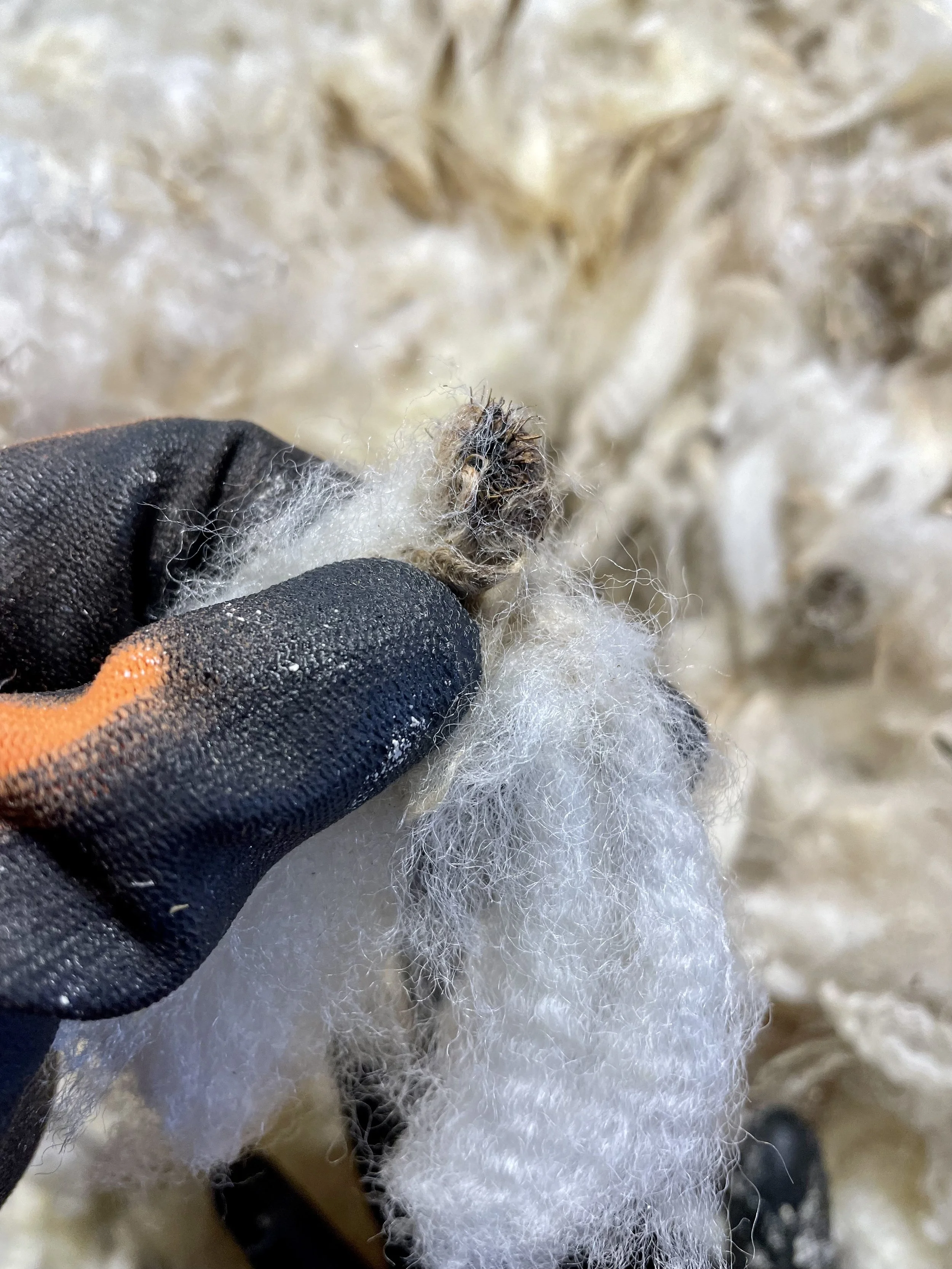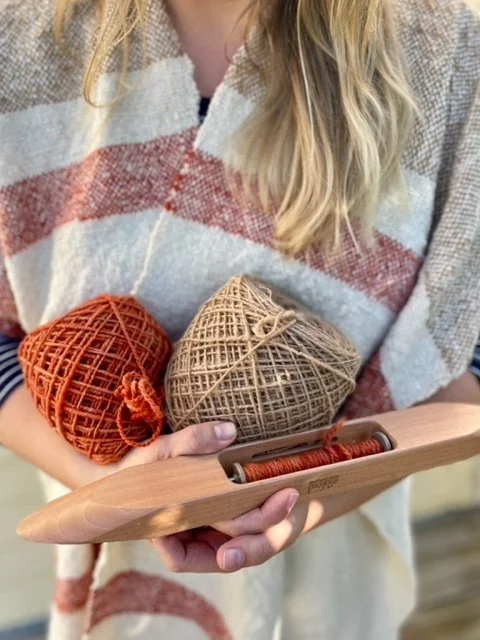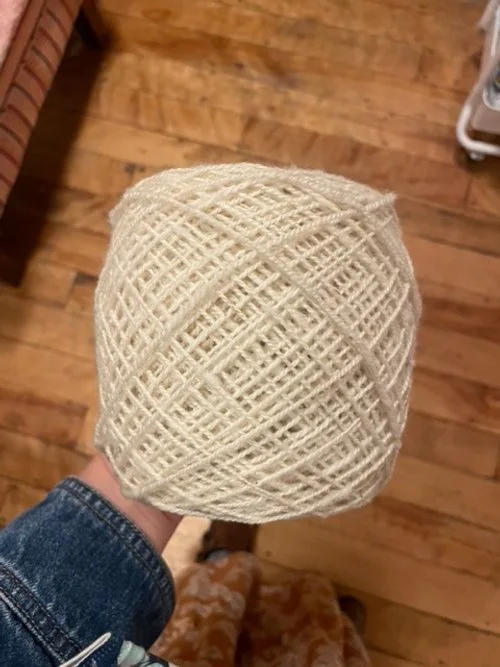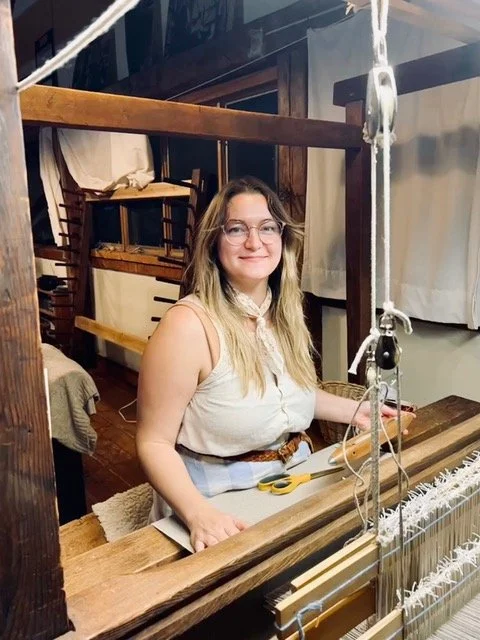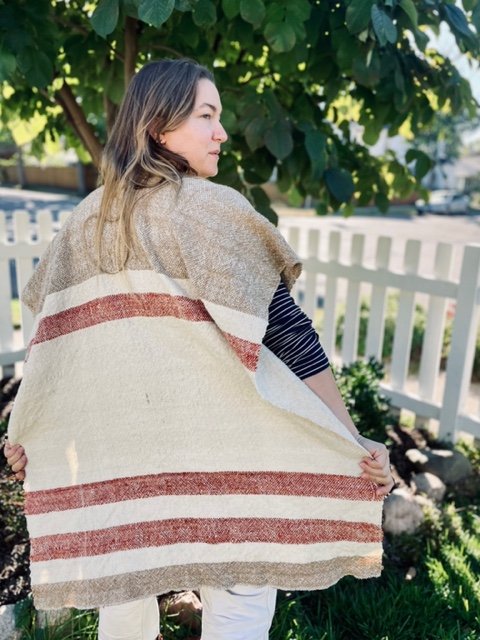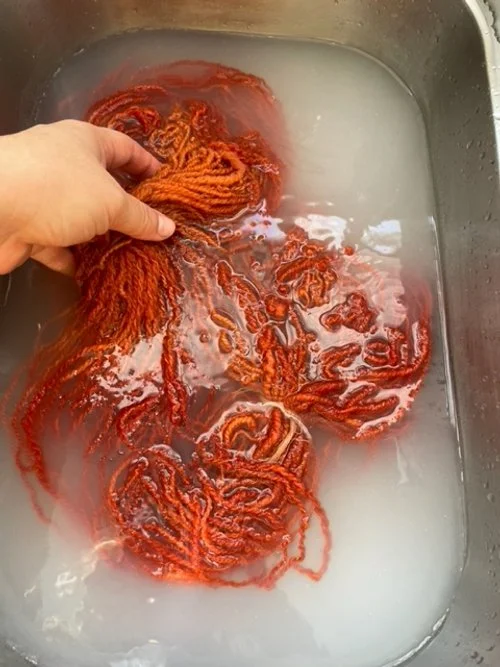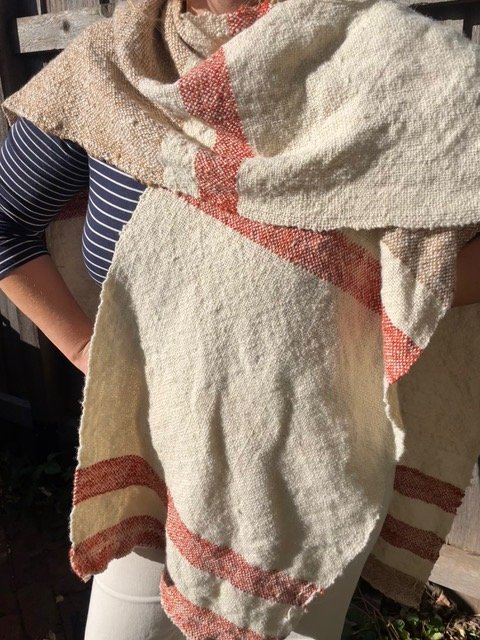Natalie Reece
she/her
Spinning - Natural Dyeing - Knitting - Sewing
Minneapolis, MN
Northeast
Instagram: @natalie.claire.reece
From Sheep to Shawl Project
Natalie will be weaving her shawl on an 8-shaft countermarch Öxabäck floor loom. She will draft her own pattern and use wool from Shropshire, East Frisian, Dorset, South African Meat Merino, Rambouillet, Coopwroth, and Corriedale breeds.
Most of these fleeces were shorn from Prairie Folk Farm’s meat sheep and their wool would otherwise be thrown in the dumpster due to the lack of market demand.
Natalie will dye this wool with madder root and black walnut from Wisconsin and Minnesota.
Natalie is a lot of things. Biologist by trade, artist, dog lover, gardener, miniaturist, curator of a century home, and a new aunt. Her most recent artistic endeavor is in the fiber arts; running a quilting business with her sister and getting acquainted with her new 8-shaft floor loom.
Her focus is fibers from their inception: from the shearing of a sheep to the growing of flax. She is interested in turning raw, natural materials into beautiful works, owning the entire process and paying tribute to the labor of her foremothers.
Natalie hopes her work serves as an inspiration to turn away form the current culture of commodification, and toward a sustainable, just, and joyous future. Natalie lives in Minneapolis, MN with her partner Aaron and their dog Lenore.
Other interests:
Natalie has many interests: quilting, poetry, knitting, microbiology, psychology, horticulture, gardening, natural dyeing, candle making, reading, singing, stuffed animal making, and even making miniatures. As long as she is learning something new and working with her hands, Natalie is happy. Currently, Natalie would like to learn how to extract the lanolin from wool during processing. She also would like to learn to process and spin flax from her garden plot into linen yarn.
the project
the fiber
Sheep Breeds - Shropshire, Île-de-France, East Fresian, Dorset, South African Meat Merino, Rambouillet, and Corriedale.
Sourced from - Prairie Folk Farm, Chilton, WI
These fibers are all in the down family - they are white, crimpy, light and airy, and hard to felt. This wool was sourced from a farm that primarily markets meat and the wool would have otherwise been thrown away (considered “waste wool”).
Processing
The fiber will be entirely processed by Natalie in her home by hand.
Some of the naturally white wool will be dyed red with madder root and brown with walnut. Madder root is a natural dye sourced from KnityVet’s Garden Yarn. Walnut is a natural dye that will be gathered from the trees in the neighborhood.
Handspun single ply yarn
Shearing - Austin, Prairie Folk Farm
Skirting after shearing
Spinning wool
Shearing - Austin & Kristin, Prairie Folk Farm
After Shearing - A total of 54 bags of fleece. About 250 pounds of wool
Hand spun, single ply yarn
Burr stuck in white crimpy fleece. After shearing, fleeces must be “skirted” to remove debris and dirty/damaged wool before further processing.
Madder root from KnittyVet’s Garden Yarn
the pattern
The shawl was made as a plain weave, 8 epi. Worked from the back to the front, split the warp at the shoulder and woven with two separate shuttles to finish the front panels.
From Natalie: “I made a very simple piece that worked very well with my handspun so there weren't too many surprises. The biggest surprise was how strong the handspun was. I thought I might have a problem with the warp breaking under so much tension but it was just as strong as any store-bought yarn I've worked with and it was so fun to work with. Wool is magic!”
Handspun undyed yarn
3 war chains of un-dyed handspun yarn ready to dress the loom
Final wash. Yarn dyed with black walnut
Natalie at the loom
Final wash - yarn dyed with madder
Finished shawl




